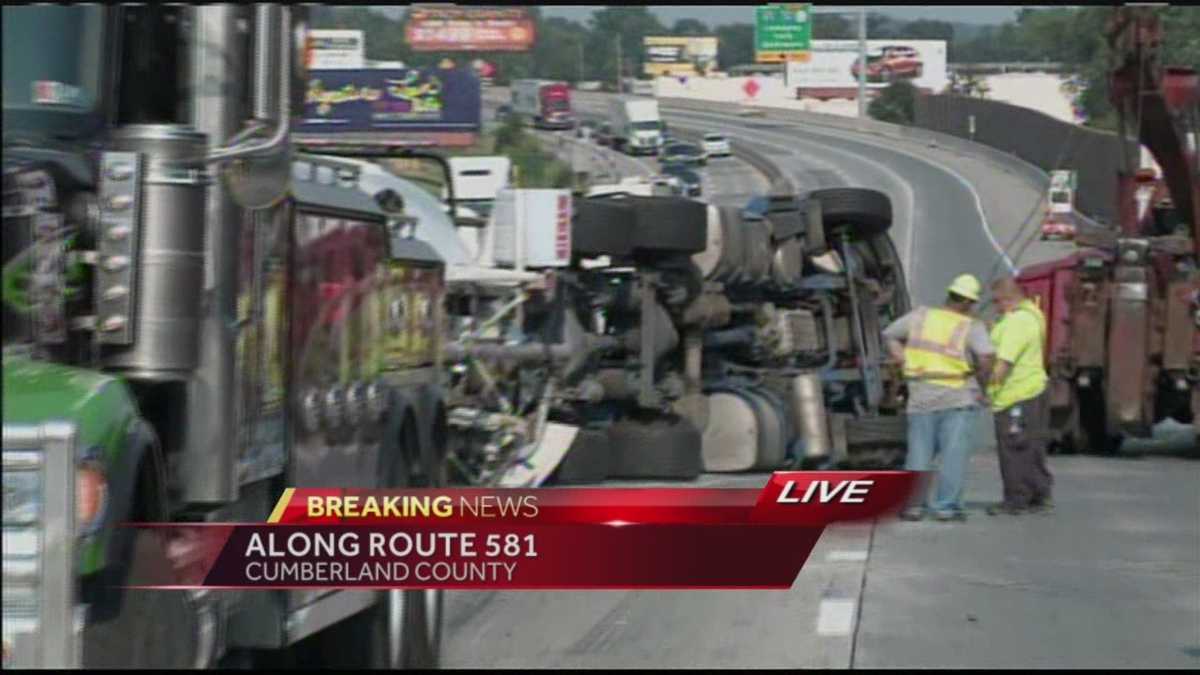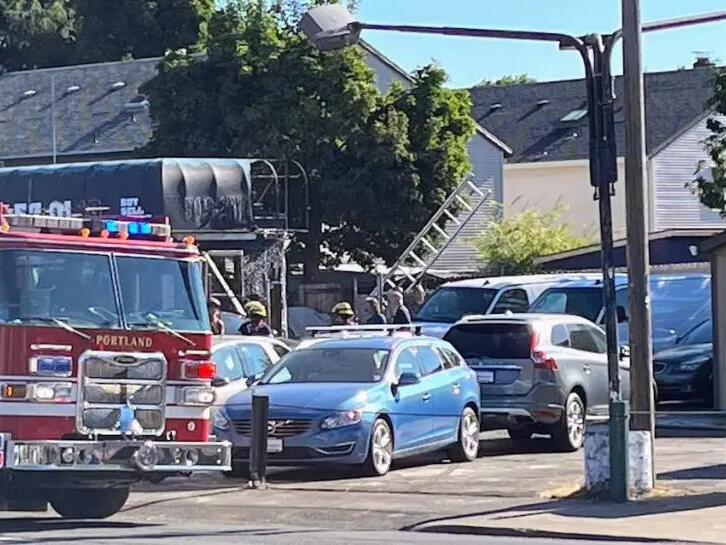The Growing Threat Of Air Traffic Control Outages: A National Safety Concern

Table of Contents
Causes of Air Traffic Control Outages
Several factors contribute to the growing number of ATC outages, jeopardizing airspace safety and efficient air traffic management.
Technological Failures
Outdated infrastructure and technological vulnerabilities are major culprits. The reliance on aging systems creates points of failure that can cascade into widespread disruptions.
- Ground-based radar outages: Failures in radar systems can lead to a loss of situational awareness, forcing controllers to rely on less precise methods and potentially impacting aircraft separation.
- Communication system malfunctions: Problems with voice communication systems, data links, and other communication infrastructure can severely hamper the ability of air traffic controllers to effectively manage air traffic.
- Data processing errors: Glitches in the software used to process flight data can lead to incorrect information being displayed to controllers, causing confusion and potentially dangerous situations.
The need for modernization and investment in resilient, next-generation technologies is paramount. Upgrading to more robust and redundant systems is crucial to mitigating the risk of future technological failures and ensuring the reliability of air traffic management.
Human Error
While technology plays a significant role, human error remains a contributing factor to ATC outages. This encompasses a range of issues, from training deficiencies to fatigue and workload management.
- Incorrect instructions: Errors in issuing clearances or instructions to pilots can lead to near-misses or more serious incidents.
- Miscommunication: Poor communication between controllers, pilots, and other stakeholders can result in confusion and delays.
- Inadequate staffing: Understaffing can lead to overworked controllers, increasing the risk of human error due to fatigue and stress.
Robust training programs, improved workload management strategies, and a strong safety culture are essential to mitigate human error. Investing in advanced simulator training and ensuring adequate staffing levels are crucial for maintaining a high level of air traffic control performance.
Extreme Weather Events
Severe weather conditions can significantly impact ATC operations, causing delays and even complete outages. This highlights the vulnerability of some infrastructure to the elements.
- Lightning strikes: Lightning strikes can damage sensitive electronic equipment, causing communication and radar outages.
- Heavy snow and ice: Accumulation of snow and ice can disrupt ground operations, affecting access to equipment and potentially grounding aircraft.
- High winds: Strong winds can affect the operation of radar systems and other sensitive equipment.
Developing weather-resilient infrastructure and implementing comprehensive contingency plans are crucial for ensuring the continued operation of ATC systems during extreme weather events. This includes investing in backup power systems, weather-proofed equipment, and robust emergency procedures.
Consequences of Air Traffic Control Outages
The consequences of ATC outages are far-reaching, impacting not only air travelers but also the wider economy and national security.
Flight Delays and Cancellations
ATC outages lead to widespread flight disruptions, causing massive delays and cancellations that affect thousands of passengers daily.
- Lost productivity: Delayed flights lead to lost productivity for business travelers and affect the efficiency of numerous industries.
- Hotel costs: Passengers face unexpected expenses for accommodation and meals due to delays.
- Compensation claims: Airlines face significant costs in compensating passengers for disrupted travel plans.
The ripple effect of these delays extends to the broader economy, impacting businesses reliant on air travel for logistics and personnel.
Safety Risks
Disruptions to air traffic control can create hazardous situations, increasing the risk of accidents and near misses.
- Increased aircraft separation: Reduced situational awareness can lead to aircraft operating in closer proximity than safety standards allow.
- Loss of situational awareness: Controllers may lose track of aircraft, increasing the risk of collision.
- Increased workload on pilots: Pilots may face increased workload in navigating around disruptions caused by ATC outages.
The potential for catastrophic consequences underscores the critical need for robust and reliable air traffic control systems.
Public Confidence Erosion
Frequent ATC outages erode public confidence in the safety and efficiency of the air travel system.
- Impact on travel behavior: Passengers may become hesitant to fly, choosing alternative modes of transportation.
- Negative impact on tourism: Disruptions can deter tourists from visiting certain destinations, impacting local economies.
- Reduced airline revenue: Airlines can experience losses due to decreased passenger numbers.
Maintaining transparency and effective communication during outages is vital to rebuilding and maintaining public trust in the aviation system.
Solutions and Mitigation Strategies
Addressing the growing threat of ATC outages requires a multi-pronged approach focused on technological upgrades, enhanced training, improved contingency planning, and stronger collaboration.
Infrastructure Upgrades
Investing in modern, resilient technology is paramount. This includes implementing next-generation air traffic control systems.
- NextGen air traffic control system: Transitioning to this system offers improved efficiency, automation, and redundancy.
- Improved cybersecurity measures: Enhanced cybersecurity protocols are crucial to prevent cyberattacks that could cripple ATC systems.
- Redundant systems: Implementing backup systems ensures continued operation even in the event of primary system failures.
Enhanced Training and Staffing
Improving training programs and ensuring adequate staffing levels are essential for minimizing human error.
- Advanced simulator training: Enhanced simulator training can better prepare controllers for handling unexpected situations.
- Improved communication protocols: Standardized communication protocols can help improve clarity and reduce the risk of miscommunication.
- Increased staffing levels: Adequate staffing reduces controller workload and fatigue, minimizing the risk of human error.
Improved Contingency Planning
Developing comprehensive contingency plans is vital for minimizing the impact of outages.
- Backup systems: Having functioning backup systems ensures continued operation in the event of primary system failures.
- Emergency procedures: Well-defined emergency procedures enable controllers to manage traffic effectively during disruptions.
- Communication protocols: Clear communication protocols ensure effective information sharing during emergencies.
Increased Collaboration and Information Sharing
Better collaboration between ATC agencies, airlines, and other stakeholders is crucial for efficient response and prevention.
- Data sharing between airlines and ATC: Sharing real-time flight data improves situational awareness and enhances decision-making.
- International collaboration on safety standards: Harmonizing safety standards globally improves interoperability and enhances safety across borders.
- Improved communication channels: Utilizing multiple communication channels, such as data links and voice communications, creates redundancy and resilience.
Conclusion
Air traffic control outages represent a serious and growing threat to national safety and the efficiency of our air transportation system. Addressing this requires a comprehensive strategy encompassing substantial investment in infrastructure upgrades, improved training and staffing, enhanced contingency planning, and increased collaboration among all stakeholders. Failure to act decisively risks further disruptions, increased safety risks, and a significant erosion of public confidence. Investing in robust and reliable air traffic control infrastructure isn't just a financial imperative; it’s an investment in national security and the well-being of millions. Let's prioritize the modernization and resilience of our air traffic control systems to ensure the continued safety and efficiency of air travel and mitigate the growing threat of air traffic control outages.

Featured Posts
-
 Fratii Tate Defileaza Prin Bucuresti Video Cu Reactia Multimii Dupa Eliberare
May 22, 2025
Fratii Tate Defileaza Prin Bucuresti Video Cu Reactia Multimii Dupa Eliberare
May 22, 2025 -
 The Fate Of Trumps Tax Bill A Look At The Political Landscape
May 22, 2025
The Fate Of Trumps Tax Bill A Look At The Political Landscape
May 22, 2025 -
 Man Achieves Fastest Ever Foot Crossing Of Australia
May 22, 2025
Man Achieves Fastest Ever Foot Crossing Of Australia
May 22, 2025 -
 Defiez Vos Amis Quiz Sur La Loire Atlantique Histoire Gastronomie Culture
May 22, 2025
Defiez Vos Amis Quiz Sur La Loire Atlantique Histoire Gastronomie Culture
May 22, 2025 -
 Abn Amro Kamerbrief Certificaten Verkoopprogramma Alles Wat U Moet Weten
May 22, 2025
Abn Amro Kamerbrief Certificaten Verkoopprogramma Alles Wat U Moet Weten
May 22, 2025
Latest Posts
-
 Route 581 Closed Due To Box Truck Accident Detours In Place
May 22, 2025
Route 581 Closed Due To Box Truck Accident Detours In Place
May 22, 2025 -
 Route 581 Shut Down After Box Truck Accident
May 22, 2025
Route 581 Shut Down After Box Truck Accident
May 22, 2025 -
 Box Truck Crash Closes Route 581
May 22, 2025
Box Truck Crash Closes Route 581
May 22, 2025 -
 Large Fire Engulfs Used Car Dealership
May 22, 2025
Large Fire Engulfs Used Car Dealership
May 22, 2025 -
 Used Car Lot Fire Extensive Damage Reported
May 22, 2025
Used Car Lot Fire Extensive Damage Reported
May 22, 2025
